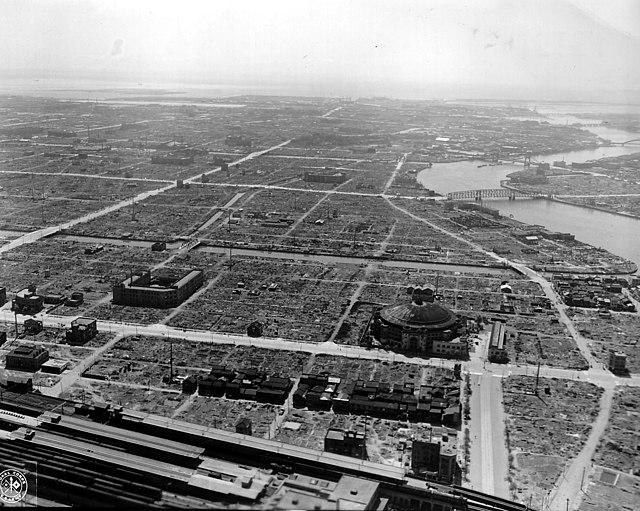The Bombing of Tokyo was a series of bombing air raids launched by the United States Army Air Forces during World War II.
Tokyo burns under B-29 firebomb assault, 26 May 1945.
Aerial view of Tokyo following the war
Leaflet dropped over Tokyo, warning civilians to leave the city
A birds-eye view over the Ningyōchō district of Nihonbashi following Operation Meetinghouse
Bombing of Tokyo (10 March 1945)
On the night of 9/10 March 1945, the United States Army Air Forces (USAAF) conducted a devastating firebombing raid on Tokyo, the Japanese capital city. This attack was code-named Operation Meetinghouse by the USAAF and is known as the Great Tokyo Air Raid in Japan. Bombs dropped from 279 Boeing B-29 Superfortress heavy bombers burned out much of eastern Tokyo. More than 90,000 and possibly over 100,000 Japanese people were killed, mostly civilians, and one million were left homeless, making it the most destructive single air attack in human history. The Japanese air and civil defenses proved largely inadequate; 14 American aircraft and 96 airmen were lost.
A road passing through a part of Tokyo which was destroyed in the 10 March 1945 air raid
A B-29 dropping conventional bombs over Japan. The bombs are being scattered by the wind, a common occurrence which made precision bombing difficult.
Two M69 incendiary cluster bombs on display at the Niigata Prefectural Museum of History
A USAAF reconnaissance photograph of Tokyo taken on 10 March 1945. Part of the area destroyed by the raid is visible at the bottom of the image.








